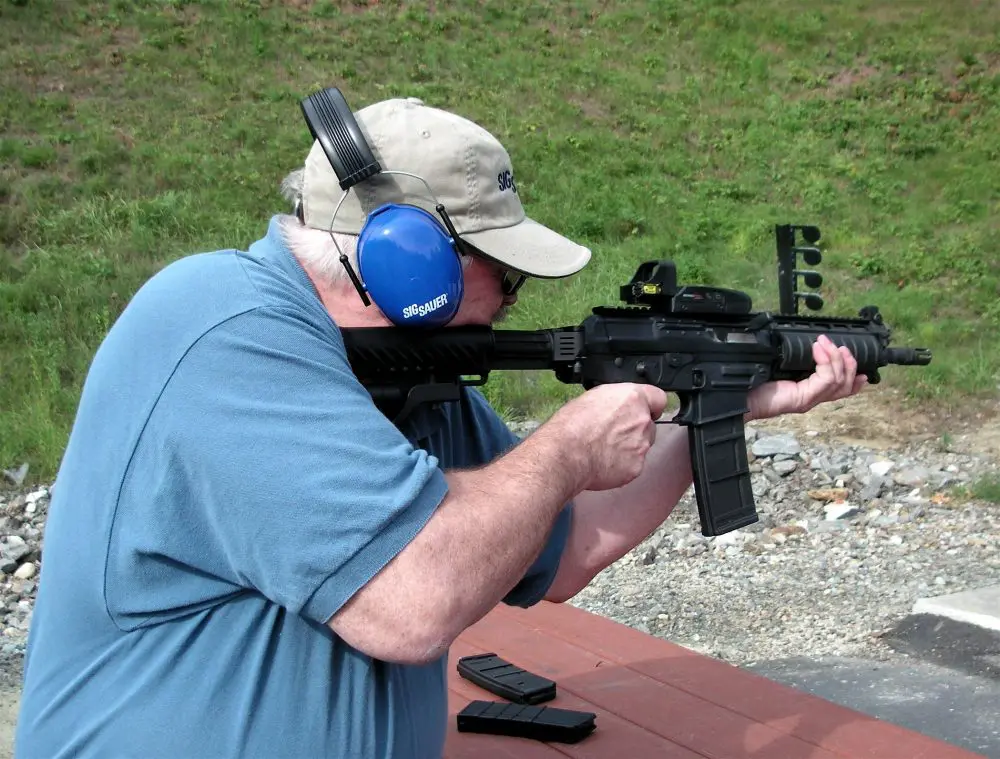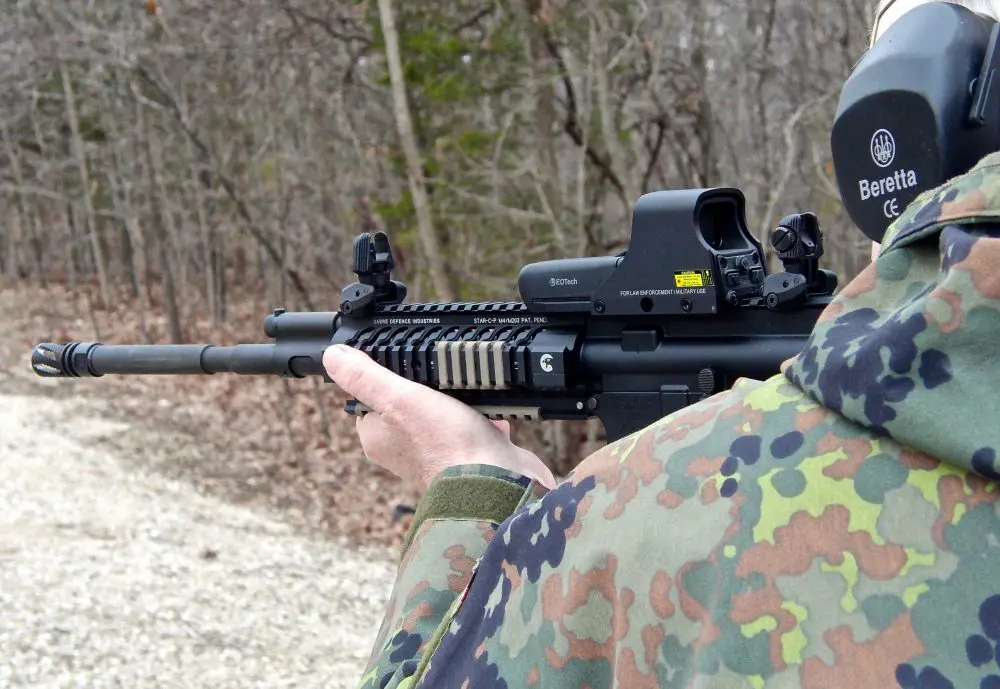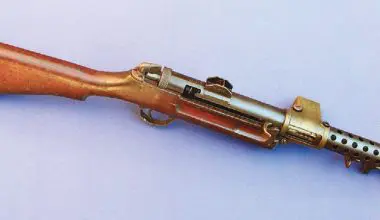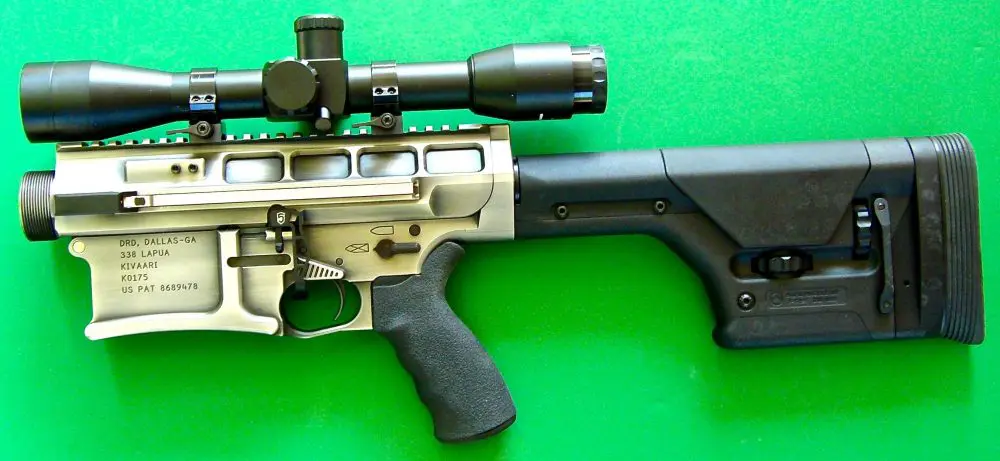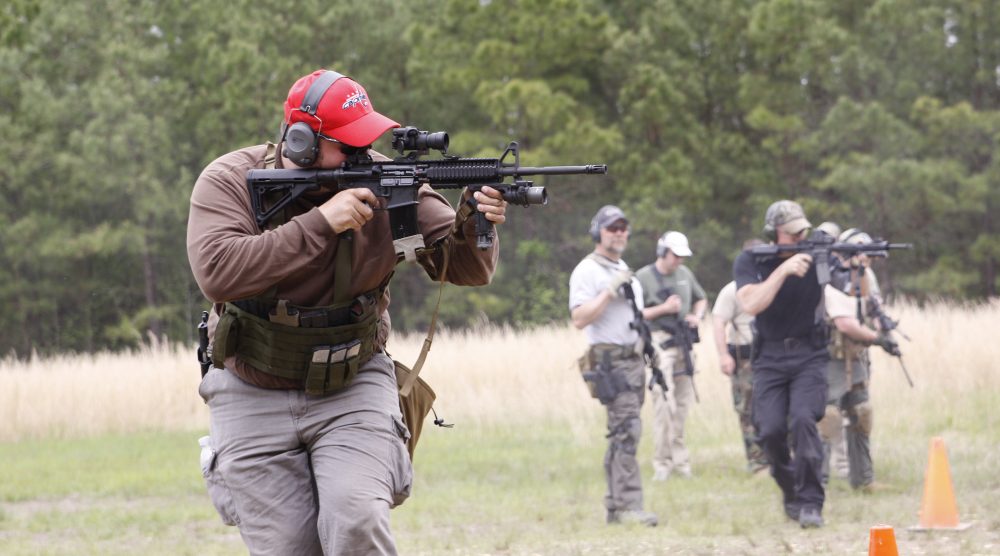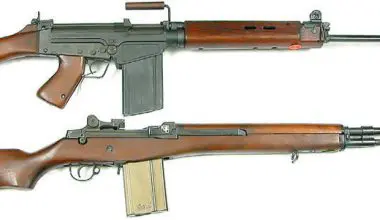Regular readers know I have long been fascinated by the short carbine versions of the AK-47 or AK-74 from different countries. I want to discuss one with which a few veterans of Afghanistan will be familiar, as it has been used by the Afghan Police. I refer to the Hungarian AMD-65. AMD stands for Automata Módosított Deszant[fegyver], Automatic Modified Paratrooper [weapon]. As is typical, the 65 stands for 1965, the year of adoption. Although deszant indicates use by paratroopers, it was also intended for motorized infantry.
The AMD-65 is a Hungarian-manufactured variant of the AKM and uses the same gas-operated rotating bolt. Unlike the best known of the short-barreled AK variations—the AKSU-74—the AMD-65 does not require the bulbous gas expansion chamber at the muzzle to ensure reliable operation.
Many would consider the AMD-65 better than the AKSU-74 as it is chambered for the more powerful 7.62x39mm round, while the AKSU-74 is chambered for the 5.45x39mm round. I wouldn’t say better necessarily, but it is different. Its heavier bullet should give more knockdown power, but the 5.45x39mm bullet is designed to tumble in soft tissue, increasing its destructive power.
The AMD-65 will normally be encountered without any wood furniture. The pistol grip and foregrip are of polymer, and the T-stock is of steel. An interesting aspect of the foregrip is that it is slanted forward to allow magazine changes more readily. Also, to save money the pistol grip is the same part, just with the foregrip reversed.
Nevertheless, it is easiest to do a fast magazine change with a 20-round magazine. I have also done them with 30-round mags with little difficulty. I gather it is also possible to insert or remove a 40-round RPK magazine fairly easily.
This makes sense because the hand grasping the magazine will be well below the foregrip. Thirty-round magazines were standard with the Hungarian armed forces and, I believe, the Afghan police.
The 12.6-inch barrel is short for a 7.62x39mm weapon, so the AMD-65 has a fairly aggressive muzzle brake. It seems to lower muzzle flash quite a bit, but I can attest that the AMD-65 is loud to fire.
Cyclic rate for the AMD-65 is 750 RPM, which makes it hard to control on longer bursts, but on short bursts it handles acceptably.
I have always found that T-stocks such as this one tend to ride up my shoulder in full-auto fire, even when I lock them in tight. The foregrip is definitely an aid in controlling the carbine.
The AMD-65 has been replaced in Hungarian service by the AK-63E, AK-63D, and AK-63MF, the last a modernized version of the AK-63D. These were basically more traditional versions of the AKM, the “D” version having the typical AKM underfolding stock.
Some readers will remember the semi-auto pre-ban versions of the Hungarian AKMs that were imported with very nice light-colored wood. I have one of these semi-auto underfolders and it’s an attractive rifle, though I’ve always found that type of stock less than comfortable for shooting. But it is better than a T-stock.
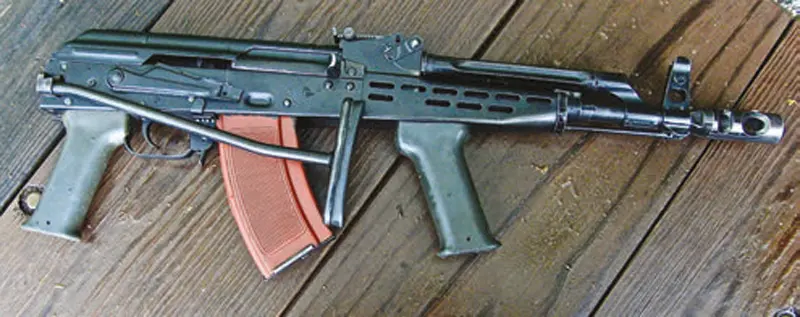
The United States purchased a substantial number of AMD-65s for the Afghan Police. I gather the Afghans have been less than thrilled with it. There seem to be three primary criticisms. First, because of the shorter barrel, some Afghan police officers feel that insurgents with standard barrel length AKs or Dragunovs can outrange them. Actually, part of this concern seems to be that the shorter sight radius of the AMD-65 lessens accuracy.

A second complaint is that the steel forward handguard conducts heat and makes continuous firing in an engagement difficult. Of course that’s one reason for the foregrip. As a side note, photos I’ve seen of Afghan Police AMD-65s show them with the light wood pistol grip and foregrip used on AK-63s. The third criticism is that the AMD-65 is not as reliable as a full-sized AK-47.
Some of these criticisms can probably be attributed to training and maintenance. Friends of mine who’ve trained the Afghan Police have mentioned difficulties in teaching fire discipline, marksmanship, and weapons maintenance.
Nevertheless, it would have made more sense to arm the Afghan Police with the ubiquitous AKM from some source. In fact, since the Afghan Army had AKMs, which are being replaced by M16/M4 variants, it would have made logistical sense to use the AKM for everyone, to ease parts interchangeability and maintenance.
One of my friends who trained the Afghan Police and who knows AKs very well, did tell me he felt the AMD-65 was harder to keep running reliably than the AKM.
I had the luxury of shooting the AMD-65 without the Taliban firing at me. Ergonomics were standard for anyone familiar with AKs. The safety operated the same way, as did the paddletype magazine release. Sights were also basically the same.
As mentioned, the T-stock was uncomfortable and had a tendency to creep during continuous firing. I didn’t fire enough continuous rounds for the handguard to overheat, but I could see that it quite likely would after just a couple of magazines fired quickly. After all, I’ve seen AK wooden forearms catch fire after continuous full-auto fire.
The AMD-65 did not balance especially well in my hands. I’ve done quite a bit of shooting with the AKSU. It handles much more instinctively and is livelier in the hands than the AMD-65.
Left over from the days when I did foreign weapons training, I jump at any chance to fire relatively exotic weapons, especially those from the former ComBloc. As a result, this column offered a good excuse—not that I needed one—to put a couple hundred rounds through the AMD-65.
